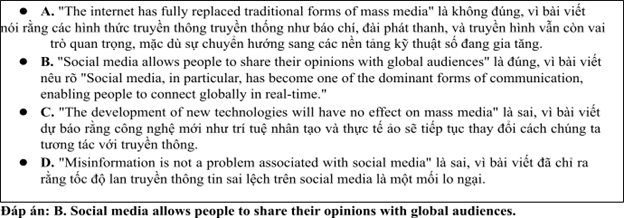The development of mass media has dramatically transformed the way people communicate, share information, and engage with the world. From the invention of the printing press in the 15th century to the rise of television and, more recently, the internet and social media, the means by which we consume news and entertainment have evolved at an unprecedented rate. Today, traditional forms of mass media such as newspapers, radio, and television still play a significant role, but the digital revolution has shifted the landscape toward online platforms.
Social media, in particular, has become one of the dominant forms of communication, enabling people to connect globally in real-time. Platforms like Facebook, Twitter, and Instagram allow users to share opinions, experiences, and media with vast audiences. The spread of digital media has also had a profound impact on journalism, with citizen journalism becoming increasingly prevalent. People no longer rely solely on professional reporters to provide news; instead, they can report and share stories themselves.
However, the rise of digital media has also raised concerns about misinformation. The speed at which information spreads on social media can result in false or misleading stories being shared rapidly, sometimes causing harm before corrections can be made. Additionally, the dominance of certain large corporations in the media industry has led to concerns about the concentration of media ownership and its impact on diversity and fairness in reporting.
Despite these challenges, mass media continues to evolve. The introduction of new technologies, such as artificial intelligence and virtual reality, promises to further change how we interact with media in the coming years. As the media landscape continues to evolve, it remains to be seen how it will shape public opinion, political discourse, and our understanding of the world.
(Adapted from CNN news)
Câu 23. Which of the following is NOT mentioned as one of the traditional forms of mass media?
A. Newspapers B. Radio C. Television D. Social media
Câu 24. The word "prevalent" in paragraph 2 is OPPOSITE in meaning to:
A. Rare B. Common C. Important D. New
Câu 25. The word "they" in paragraph 2 refers to:
A. Citizens B. Reporters C. people D. Journalists
Câu 26. The word "concerns" in paragraph 3 could be best replaced by:
A. Questions B. Problems C. Benefits D. Ideas
Câu 27. Which of the following best paraphrases the underlined sentence "The rise of digital media has also raised concerns about misinformation" in paragraph 3?
A. The increase in digital media has helped spread more accurate information.
B. Digital media has contributed to the spread of false information.
C. There are no concerns about misinformation with the rise of digital media.
D. Digital media has stopped the spread of fake news.
Câu 28. Which of the following is TRUE according to the passage?
A. The internet has fully replaced traditional forms of mass media.
B. Social media allows people to share their opinions with global audiences.
C. The development of new technologies will have no effect on mass media.
D. Misinformation is not a problem associated with social media.
Câu 29. In which paragraph does the writer mention a future prediction about mass media?
A. Paragraph 1 B. Paragraph 2 C. Paragraph 3 D. Paragraph 4
Câu 30. In which paragraph does the writer discuss the negative effects of mass media?
A. Paragraph 1 B. Paragraph 2 C. Paragraph 3 D. Paragraph 4
Second Semester Midterm Exam GRADE 12 Test 12







